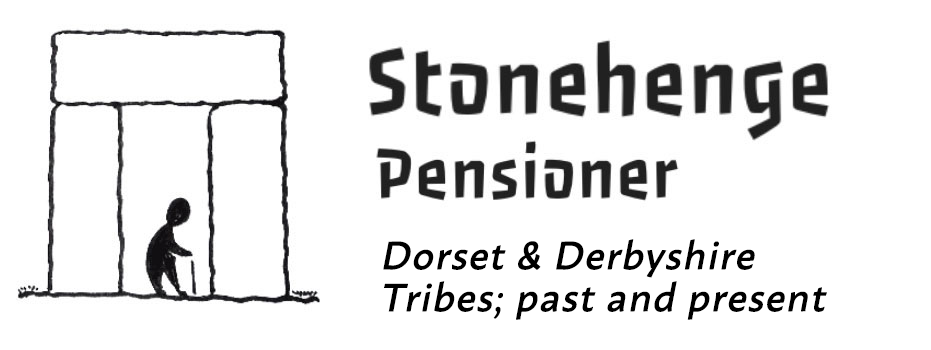Siney Sitch
Ann and I run everywhere, well almost. We do paths because they are there. Over time we do paths to link up routes we have already done. In time, we create a spiders web of known paths over entire areas. Consequently, we really know an area intimately. However, on most runs we find a spot that touches our soul in some small way. Reflecting on a route, we often agree that a certain place had a feeling, a sense of emotion or spirit. There is no theory, no technique by which we can describe this, it just happens. You can blame the endorphins if you like, the drug that erupts in the brain after running. These flood the body with joy, we are told. If so, perhaps Siney Sitch is a mirage, not a real place.
Offerton Moor
There are places where the sky and the earth meet. A sliver of land stretches out before you, evaporating into the blue remembered hills beyond. This thin membrane, in which all of life exists, is perhaps only two feet thick. There is no life in the underworld, not as we know it. Above, a sky that evaporates into infinity, into the blue that is not really blue. These two realms, vast in extent, conjoin at times and we run over one, and look out into another. Because the sky has a warm star, that thin membrane turns green, just there, not below or above. Offerton Moor is such a place. We run there in about an hour from Bradwell, past heather and cotton grass. Another human is a rare thing on the moor. Then, a wooden bridge over a stream falling into a black pool. This is Siney Sitch.
Ancient people
The Ordnance Survey map indicates that three tumuli exist just a matter of metres further along the path. In other words, a bereaved tribe interred their chieftains in that spot perhaps four to five thousand years ago. Is that too much of a coincidence? Was he, possibly even she, interred there because Siney Sitch is close by? The black pool, lined with peat, could be seen as a cleft, an entrance to the underworld. Water clearly did intrigue these early people. Otherwise, this was a packhorse trail and the water must have been a godsend in this remote spot for horses. Did these travellers name the spot Siney Sitch for some reason back in the medieval period?
Tumuli
We went back to see if we could locate the three tumuli, the tombs, in amongst the heather. Sure enough, the path ran through one of these. All that showed was a few stones, that only perceptive walkers or runners would notice. The other two tombs were slightly west of the path. One of these showed signs of having been excavated some time in the past. The dead lie, hopefully, under what remains on the surface. Perhaps they sense the glow of the stars, their nightly coverlet in this remote spot.
The internet suggest sitch is slang for a situation. As for Siney, that can be a surname, possibly 7th century Old English. It can also mean blue green and is used as a girl’s christian name. In Europe some suggest that it means, ‘shine like a diamond or blooming stars from the skies’. Blue green is where the sky meets the land, and the black pool as a diamond is appealing. I won’t be there to see whether the stars bloom in the darkness. I might just meet a Bronze Age group interring a warrior and that would be too much!
Siney Sitch
I don’t know where the name came from and neither does that matter. It is a place of reflection, of calm, of serenity, a place Ann and I can drift through in our own reverie. Never do we feel more alive than when at such spots. However, we pass through, as they did, and, ultimately, fade away. All that is left is a couple of fascinating words on a map, and an imaginative pensioner mind.




